Last updated: December 8, 2020
Article
Junior Ranger, Jr. Explores Orioles
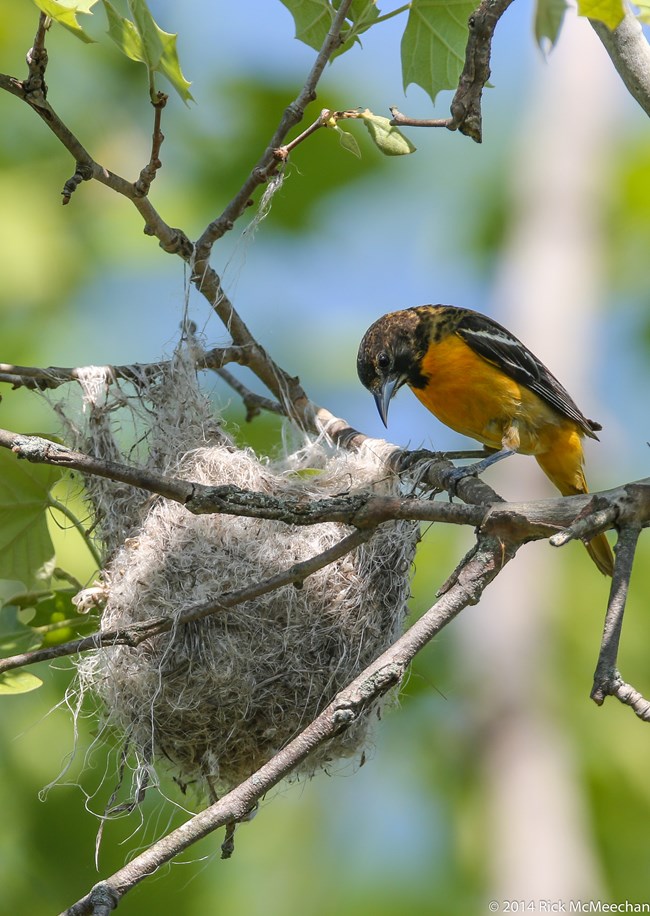
© Rick McMeechan
Imagine
If you were a male Baltimore oriole, you would be bright orange with a black head and wings. You would have a white stripe on each wing. If you were a female, your body would be orange-yellow and your head an olive yellow. Females are expert weavers. You would hang your nest on a tree branch. Feeling hungry? You would search for insects or the ripest fruit. You love mulberries, cherries, grapes, and oranges. You would stab the fruit with your beak, open your beak to break it open, and then drink the juice with your brushy-tipped tongue. If you wanted to talk with your friends, you would make a unique call—a low-whistled hew-li!
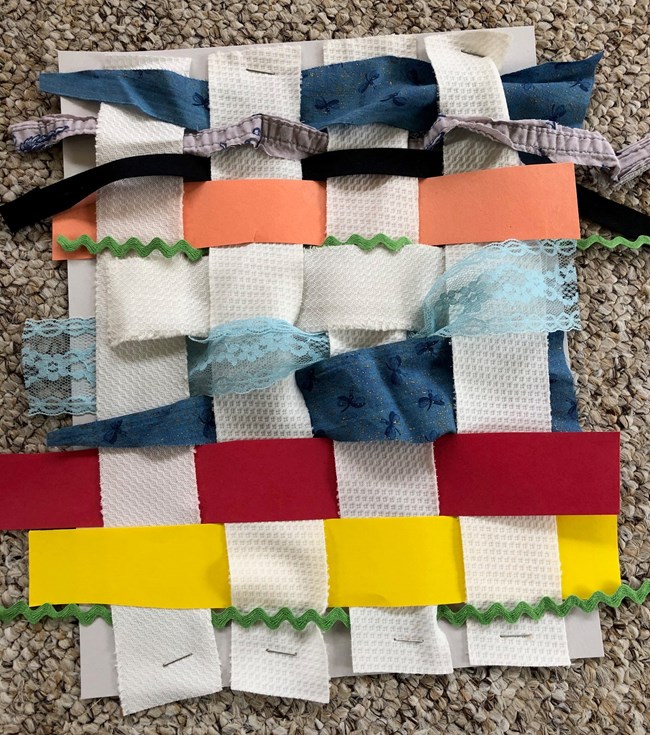
NPS / Kerry Muhl
Make
Practice the skills of a mother oriole by making a simple weaving.
Materials
- construction paper (different colors)
- colorful ribbon, yarn, string, fabric, paper towels, or whatever is available
- stapler or tape
Directions
- Lay a piece of construction paper down vertically as your base.
- Cut 4 or 5 strips of paper or fabric wide and long enough to cover the base vertically with a little space in between.
- Staple or tape the top of each strip to the base.
- Cut colorful strips of ribbon, yarn, string, fabric, or other materials that are a little wider than the base. The strips can vary in thickness.
- At the top of your base, below the staples, weave one strip horizontally first UNDER and then OVER the vertical strips.
- Weave a second strip below the first strip, first OVER and then UNDER the vertical strips.
- Repeat this alternating pattern of weaving with each new strip until you reach the bottom.
- Smoosh the horizontal strips closer together so your nest is tightly woven. No holes for eggs to fall out!
- Staple or tape the bottom of each vertical strip to hold everything in place.
Look/Listen
Listen to a male Baltimore oriole sing and two males chase a female.
Listen to a female Baltimore oriole.
Watch a video of Baltimore oriole feeding on an orange.
Can you call like an oriole? hew-li!
Move
Clear some open floor space in your home. Set up an obstacle course of large, soft objects such as stuffed animals. Pretend to be a female oriole trying to make her nest as fast as she can. Do a few practice runs, weaving in and out of the stuffed animals. Now race through the course, timing yourselves if you wish. Who is the fastest weaver?
Find
Take a walk around your neighborhood or a park. Search for any bird clues such as nests, feathers, and woodpecker holes. Can you find anything that an oriole might eat or weave into its nests? During late spring or summer, look for sock-like oriole nests in the trees. Orioles prefer to build on the outer branches of tall sycamores. These trees have patchy white bark and grow near rivers and streams.
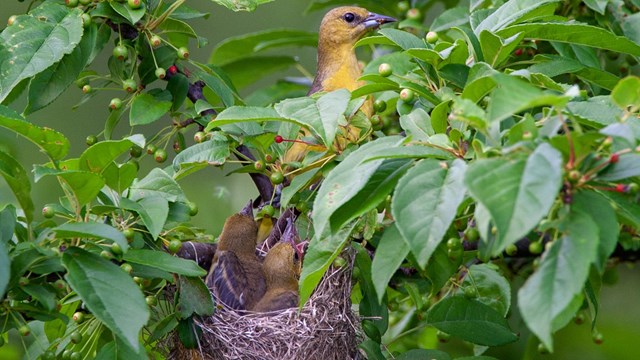
A female orchard tends a nest of hungry chicks. Credit: © Jim Roetzel
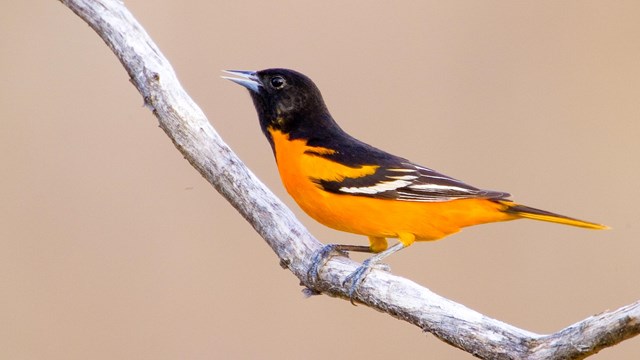
A male sings on a branch in Cuyahoga Valley National Park, Ohio. Credit: © Jim Schmidt
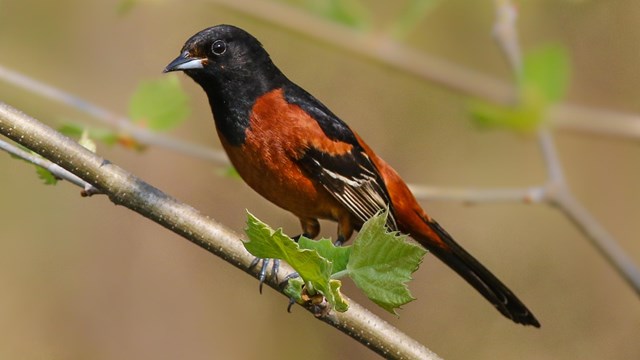
Male orchard orioles are mostly black above and chestnut below. Credit: © Rick McMeechan
Learn More
The Cornell Lab of Ornithology has put together a wonderful collection of bird sounds, photos and other information. Click to learn more about the Baltimore oriole and about the orchard oriole.
